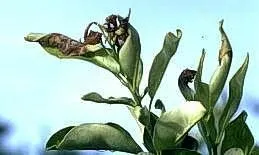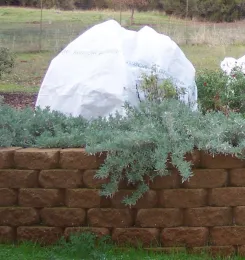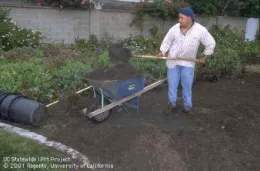Winter is Coming in the Garden

Mulching Perennials

Trees and Shrubs
Trees and shrubs usually have an easier time getting through the winter if they are in good shape. However, if a freeze is forecasted, one of the most important things to do is to ensure they have been watered 2-3 days prior, especially if autumn has been dry. As with perennials, mulching with fallen leaves or other mulch will help protect the roots, but do not have mulch up against the tree trunk or plant stem, which could cause rot to occur.
Wrapping trunks of young trees with blankets, towels or piping insulation will provide added protection.
Bulbs

Wait until after the first frost, then gently dig up the bulbs or tubers. Cut away any leaves and brush off as much soil as possible. Let them dry out in a cool spot for about a week. Label them so you'll remember what they are! Pack them in a breathable box, such as a cardboard box, storing the bulbs so they don't touch each other, and cover them in sawdust or shredded newspapers. Keep them in a cool, dark location that is below 45°F, but doesn't freeze.
Citrus

Citrus plants can be protected by frost cloths which allow some light and air to penetrate and can stay on plants for a few days at a time. They can also lay directly on plant foliage. If you use other type of cloth such as burlap or cotton sheets, use stakes to hold the cloth away from the plant greenery. Remove it during daytime when temperatures are above freezing and sunny, and replace it each night prior to sunset. Whatever cloth you use, make sure the cloth goes all the way to the ground to capture radiant heat from the ground. If there is mulch around the plant, rake away during the day, if above freezing and sunny, to allow the soil to warm up.
Roses
Some roses are more sensitive to cold than others. As a group, hybrid tea roses are the most vulnerable. Make sure they are watered prior to predicted freezing temperatures, protect the root zone with mulch on the soil mound. You may also wish to cover your sensitive roses with frost cloths.
Container Plants

What do do if frost damages your plants? Wait!
Frost damage occurs when the water inside the cells of a plant freeze, causing damage to the cellular walls, which harms the overall health of the plant. Frost damaged vegetation will wilt, turning brown or black, as if they have been scorched. The bark may crack, or split. In severe or prolonged periods of frost the plant can die.
If you see what appears to be frost damage, wait until late spring until all chance of frost has passed. Plants are resilient and can often recover on its own, producing new growth. Pruning what seems to be damaged branches too soon can cause significantly more trauma, even death, to a vulnerable plant that might otherwise have recovered in the spring.
Resources
- https://ucanr.edu/blogs/blogcore/postdetail.cfm?postnum=22929
- https://sacmg.ucanr.edu/Frost_Protection/
- https://ucanr.edu/blogs/blogcore/postdetail.cfm?postnum=45517
- http://ipm.ucanr.edu/PMG/GARDEN/ENVIRON/frostdamage.html
Denise Godbout-Avant has been a UC Cooperative Extension Master Gardener in Stanislaus County since 2020.
